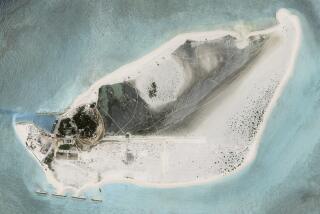China Expands Airport in Tibet to Boost Tourism
- Share via
BEIJING — Chinese authorities in Tibet are nearing completion of one of the world’s longest airport runways as part of a drive to open the remote Himalayan region to more foreign tourists.
The official China Daily said a new, 2.48-mile runway at Gongkar airport will be ready to receive jumbo jets by September.
The project is part of a plan to develop tourism facilities in Tibet--a stunningly beautiful region of mountains and valleys periodically shaken by violent outbursts of anti-Chinese unrest.
Gongkar, at 11,700 feet above sea level, is the highest airport in the world and also a major military facility. The new runway will be accompanied by advanced navigational and communication systems and a passenger terminal built “in the form of a yak’s head,” the newspaper said.
“We are optimistic about completing the whole project in time,” the newspaper quoted Zhou Zhongqi, director of the airport expansion project, as saying.
Tibet represents a challenge to China’s official tourism planners, torn between their desire to bring in more tourist dollars and the need to keep restive Tibetans isolated from outsiders.
Tibet’s spiritual leader, the Dalai Lama, has been in exile since an abortive anti-Chinese uprising in 1959.
China has clamped heavy security on Lhasa, Tibet’s capital, since March, 1989, when it crushed pro-independence demonstrations with heavy loss of life.
Individual foreign visitors to the region are discouraged. Group tours bring in more money and are easier to control.
Officials hope, however, that annual tourist arrivals will climb. China projects that Tibet will receive about 40,000 foreign visitors annually by 1995 and more than 75,000 by the year 2000, the China Daily said.
Gongkar, 66 miles southwest of Lhasa, has received the equivalent of about $72 million since 1988 to improve its facilities. The region’s roads and hotels, most of them far below international tourist standards, are also targeted for improvement.
China’s current campaign for faster economic reform has also hit Tibet, with regional officials declaring themselves ready to open technological parks and foreign investment zones to bring in more money.
The mountainous region, one of the least developed in China, has only 511 factories, “and most of them are small and unprofitable, owing chiefly to lack of technology and management skills,” according to official reports.
More to Read
Sign up for Essential California
The most important California stories and recommendations in your inbox every morning.
You may occasionally receive promotional content from the Los Angeles Times.







